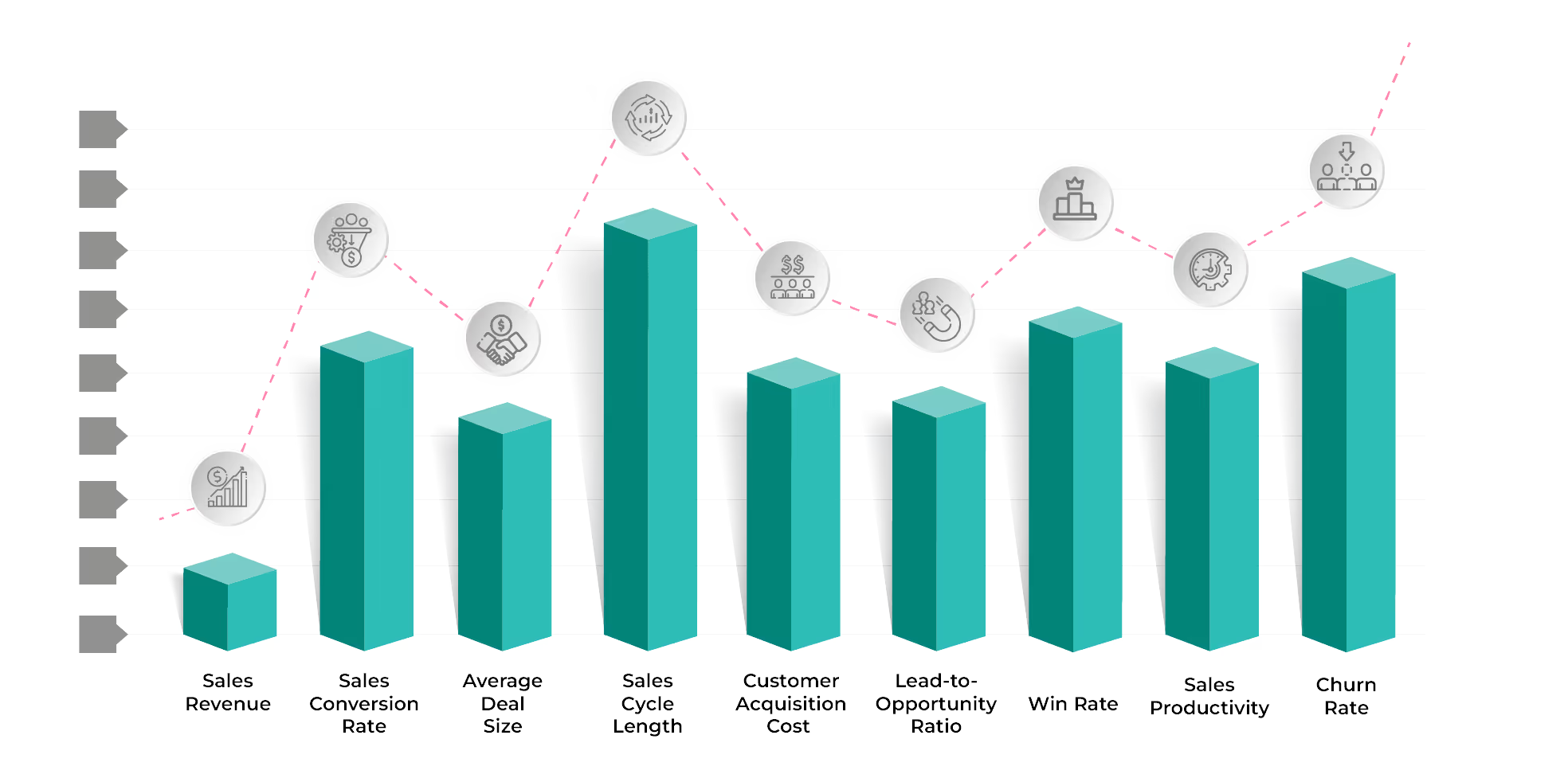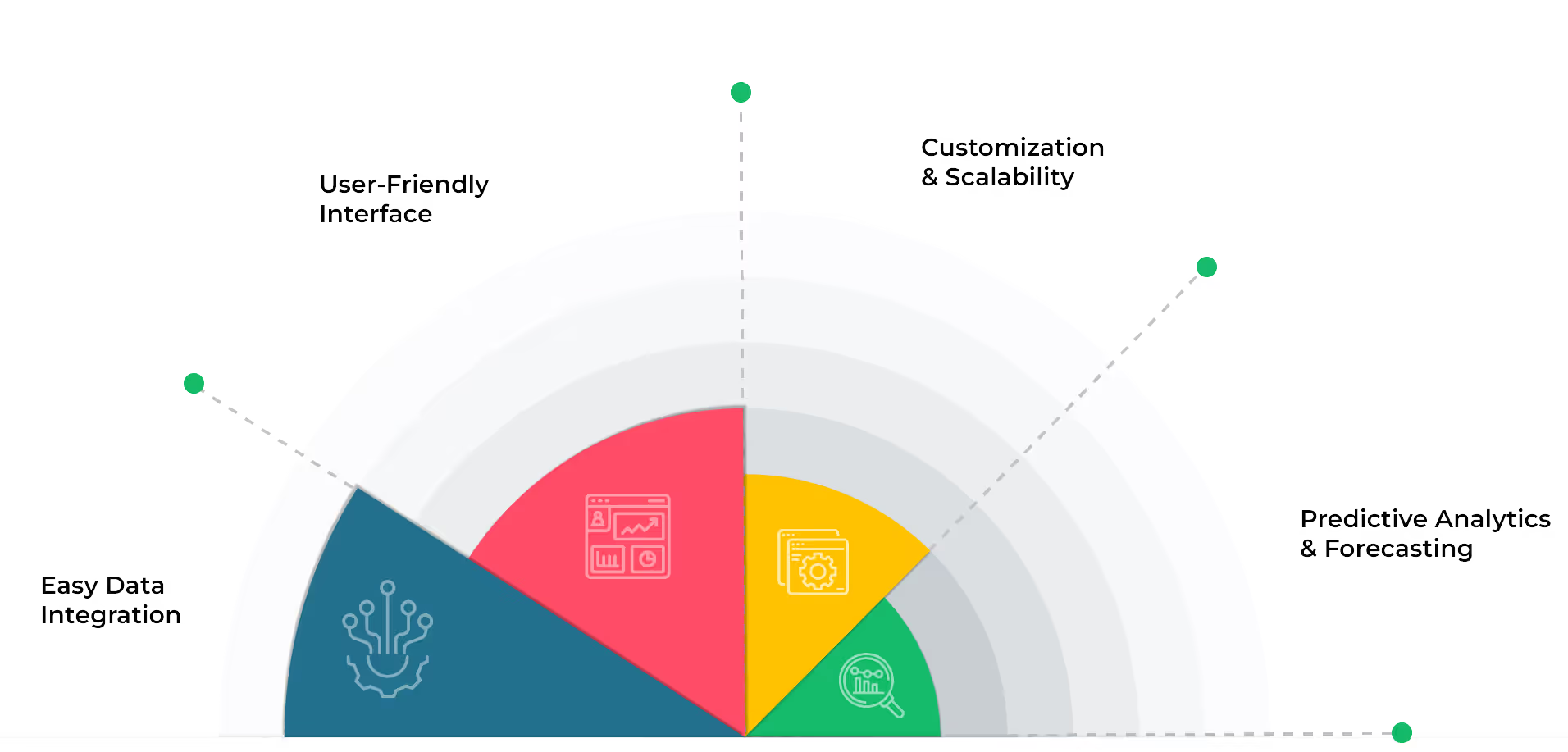
Blog
How to Master Sales Performance Analytics: Key Metrics to Track
January 4, 2024


Key Insights
Sales performance trackers are inevitable tools in current business management.
The objective evaluation, the data-based insights, the identification of strengths and weak areas as well as enabling proactive action are a few of the vast benefits it offers.
So how should the sales team go about managing their sales performance analytics? What are the benefits of incorporating such a tool into your operations? What are the key metrics to watch out for? What are some of the must-have features in your sales performance analytics software?
For all these answers and more, scroll down.
What is sales performance analytics?
Sales performance analytics refers to the process of using data analysis and insights to evaluate and improve the effectiveness of a sales team or individual sales representatives. Sales performance analysis involves examining key metrics, such as conversion rates, revenue generated, and customer acquisition costs, to make informed decisions and enhance overall sales strategy.
The process involves collecting, analyzing, and interpreting data on sales activities, processes, and outcomes to gain a better understanding of performance and make informed decisions to enhance sales success.
Leveraging sales performance analytics helps organizations make data-driven decisions, optimize their sales processes, identify areas for improvement, and ultimately drive better results. The insights gained from sales performance analysis empower businesses to implement targeted strategies for continuous sales performance improvement, fostering a more agile and competitive sales environment.
What are the benefits of sales performance analytics?
Analyzing your sales performance objectively and analytically provides a lot of benefits to your sales management. Let's look at a few among them.
- Sales performance analytics enables managers to make decisions based on valuable and insightful data based on real-time and historical data rather than intuition.
- It enables performance monitoring and provides a clear view of individual and team performance metrics.
- Sales performance analytics helps process optimization by identifying areas of improvement in the sales process.
- Sales performance analytics projects issues and challenges for early identification and thereby allows to take proactive corrective actions.
- Incorporating sales performance analytics in your sales operations identifies the areas of improvement and creates a culture of continuous improvement.
- Sales performance analytics recognizes the high-performing sales representatives, facilitates prompt appreciation, and thereby boosts sales team motivation.
- Monitoring the sales performance helps identify the specific skill gaps and thereby develop targeted training programs to upskill the sales team.
- Implementation of sales performance analytics is a cost-effective way to focus high-impact sales activities and optimize sales operations.
Incorporating sales performance analytics helps companies stay responsive and competitive in the fast-changing business world, thereby enhancing sales operations and overall business success. By providing valuable insights into customer behavior and market trends, sales performance analytics guides organizations on how to improve sales performance through targeted training, personalized strategies, and effective resource allocation.
For further reading, check Maximize Sales Performance: Top 10 Sales Coaching Tips.
9 sales performance analytics metrics to watch

Now, here are nine key sales performance analytics metrics that organizations must monitor to assess the effectiveness of their sales efforts:
Sales Revenue
Sales revenue measures the total income generated through sales activities over a specific period.
Sales Conversion Rate
Sales conversion rate calculates the percentage of leads or opportunities that convert into actual sales.
Average Deal Size
Average deal size determines the average value of each sale and provides insights into product or service pricing.
Sales Cycle Length
Sales cycle length tracks the average time it takes to convert a lead into a closed deal thereby helping to optimize sales processes.
Customer Acquisition Cost
CAC calculates the cost associated with acquiring a new customer, including marketing and sales expenses.

Lead-to-Opportunity Ratio
Lead to opportunity measures the effectiveness of lead generation efforts by assessing the ratio of leads that turn into sales opportunities.
Win Rate
Win rate examines the percentage of opportunities or deals won compared to the total number of opportunities pursued.
Enhance your sales performace analytics with kennect's winrate calculator.
Sales Productivity
Sales productivity evaluates the efficiency of the sales team by measuring the ratio of revenue generated to the time and resources invested.
Churn Rate
Churn rate assesses the rate at which customers or clients discontinue their relationship with the company, impacting overall revenue.
Monitoring these metrics provides a comprehensive view of the sales performance, from lead generation to deal closure and customer retention, thereby implementing strategies to enhance overall sales effectiveness.
Generating a regular and insightful sales performance report based on these metrics enables businesses to track progress, identify patterns, and make data-driven adjustments for continuous improvement in their sales processes and outcomes.
What to look for in sales performance analytics software
When selecting sales performance analytics software, it's important to consider several factors to ensure that the chosen tool aligns with your business needs and goals.

Let's look at some of the key features to look for in your sales performance analytics software.
Easy Data Integration
The software should be capable of integrating seamlessly with various data sources, such as CRM systems, marketing platforms, and other relevant databases. This ensures that it can access and analyze comprehensive data sets for a holistic view of sales performance.
User-Friendly Interface
An ideal sales performance analytics software must have a user-friendly interface. It must have the ability to easily navigate and interpret data through visualizations like charts, graphs, and dashboards. Visualization tools make it easier for users to understand complex sales data and derive actionable insights.
Customization and Scalability
Sales performance analytics software must allow customization to tailor the analytics to your specific business requirements. In addition, it must be scalable to accommodate the evolving needs of your business as it grows. The ability to scale ensures that the tool remains effective and relevant over time.
Predictive Analytics and Forecasting
A robust sales performance analytics tool should include predictive analytics capabilities. This involves using historical data to make informed predictions about future sales trends. Forecasting features help businesses plan and allocate resources effectively, improving overall strategic decision-making.
Incorporating efficient sales performance analytics software helps monitor sales activities, track their productivity and thereby ease the everyday sales process.
For further reading, check A Guide to Optimising Sales Performance for the Sales Process.
Final Thought
Sales performance has a direct impact on your overall business. Hence it's important to incorporate tools, techniques, strategies, and resources that will enhance and optimize your operations.
In monitoring their sales activities and keeping track of the sales progress, sales can achieve a lot of achievement. But the efficiency also lies in deciding the right metrics to keep monitoring and incorporating a sales methodology process with software that's efficient and easy to handle.
Hence, incorporating sales performance analytics into your sales operations allows for a more proactive and strategic approach to sales management, leading to improved overall business performance.
For more sales-related topics, connect with Kennect. For more information Book A Demo NOW!
ReKennect : Stay ahead of the curve!
Subscribe to our bi-weekly newsletter packed with latest trends and insights on incentives.
Thank you! Your submission has been received!
Oops! Something went wrong while submitting the form.
Your data is in safe hands. Check out our Privacy policy for more info





.jpg)









